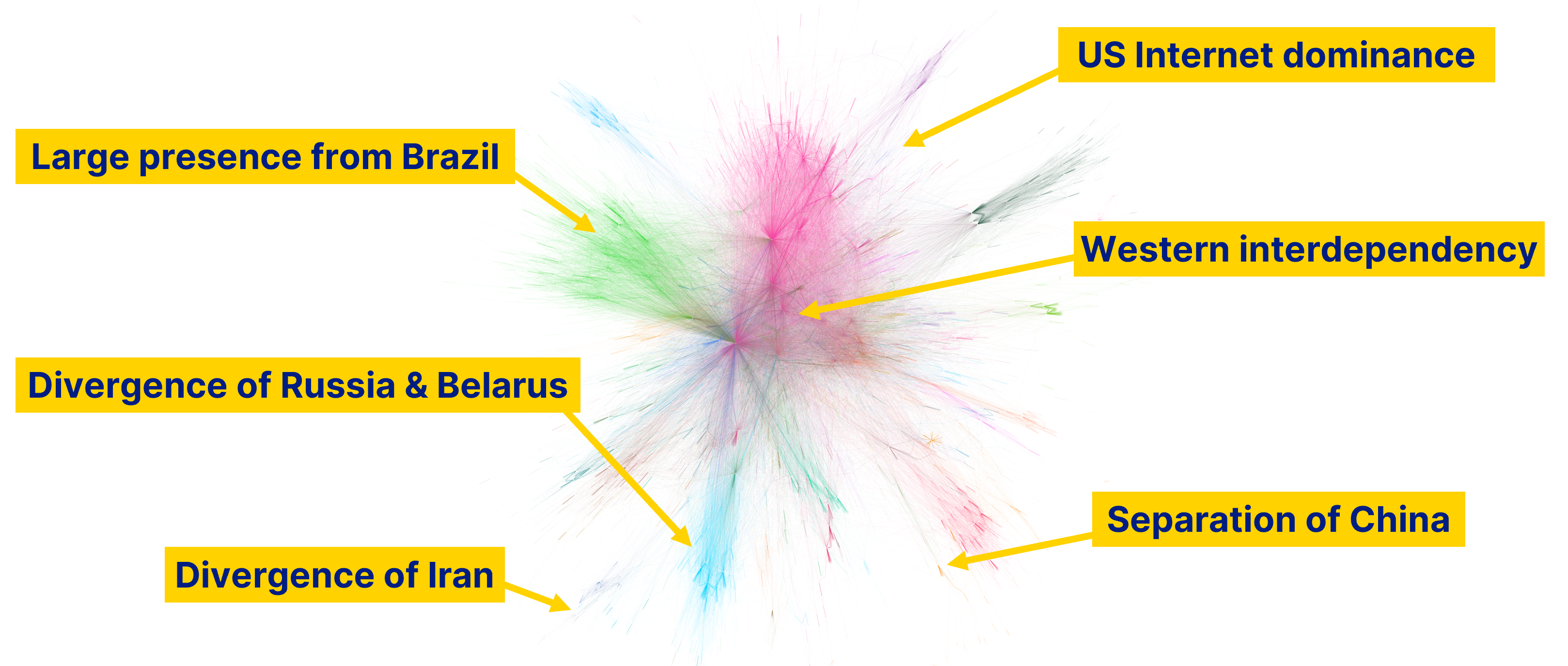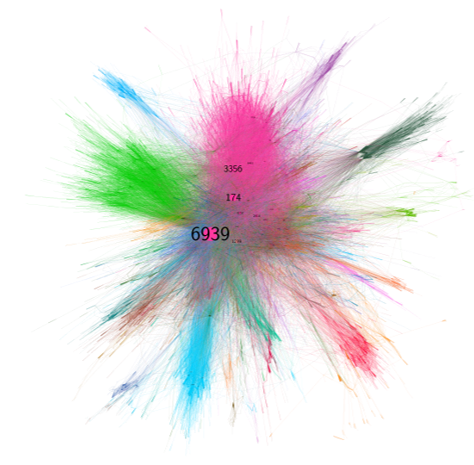It may seem like a simple question, but there isn’t a clear answer: why, when solutions to problems with the Internet’s de-facto routing protocol (BGP) exist, have they not been adopted? We theorise that the barriers to adoption are likely to be more political than they are technical.
In demonstrating this, we are investigating Internet topology, and in particular, identifying key stakeholders and their motives. This isn’t simply limited to autonomous system (AS) owners and registrants; we’re comparing Internet topology to geographic data and in doing so, observing a fragmenting and splintered Internet where nation-state boundaries are seemingly demarking similar borders in the Internet.

Using data collected from the RouteViews project (University of Oregon) and the Routing Information Service (RIPE NCC), we can model the Internet’s topology at fixed points in time. In our diagram above, we observe the state of the Internet on 1 June 2023. Notably, key nation-state borders emerge from a central ‘core’ of the Internet comprising of principally ‘western’ nations, with strong divergence from Russia, Belarus, Iran and China - all nations with notably high censorship efforts.

In a slighly different representation of the same Internet topology data, we can scale Internet ASes depending on their eigencentrality (a measure of the influence of a node, calculated by determining how many other nodes ‘point’ to a given node). In this, we observe an Internet where the most influential ASes are principally registered in the US, furthering the argument that the Internet is US-dominant. It’s worth noting, however, that this isn’t the full picture: where an AS is registered isn’t fully representative of where it ‘appears’ on the Internet (which is largely dictated by Internet exchanges and cable connectivity).
We’re developing our methodology further, however we presented some of our initial observations to the Multi-Service Networks workshop at Coseners last week.
Presentation
The slides from our workshop presentation are available below.